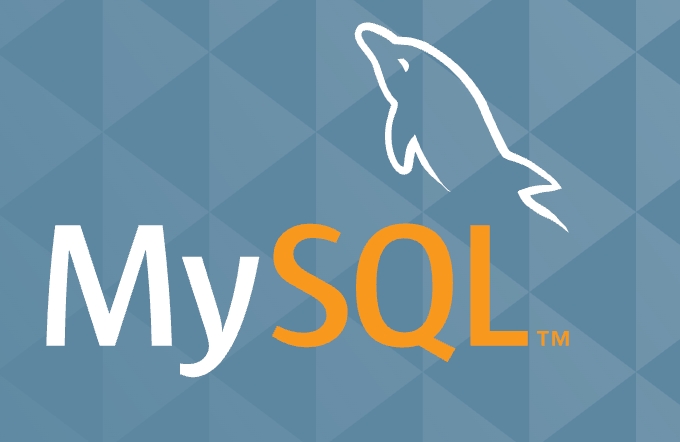MySQL service crashes are usually caused by insufficient resources, configuration errors, hardware problems or software conflicts, and the troubleshooting needs to be carried out in steps. 1. First check the MySQL error log to find warnings or error messages before crashes, such as insufficient memory, table space loss, etc., and it is recommended to monitor the log regularly. 2. Check the use of system resources, including memory, CPU and disk space. It is recommended to use monitoring tools and reasonably set the InnoDB buffer pool size. 3. Check the rationality of MySQL configuration, such as the maximum number of connections, log file size and other parameters. It is recommended to use MySQL Tuner to analyze and back up the configuration file before modifying it. 4. Troubleshoot hardware or system problems, such as hard disk failure, system update impact, permission restrictions, etc. It is recommended to view the system log and I/O status. 5. Check for external software interference, such as antivirus software, timing tasks or unstable plug-ins. It is recommended to close irrelevant programs and review script operations. During the troubleshooting, logging, then resource, configuration, and system should be first, and then external interference should be gradually located.

MySQL service crash problems are actually quite common, especially when the load is high or the configuration is improper. To put it directly, the key point: Crash is usually caused by insufficient resources, configuration errors, hardware problems, or software conflicts . When troubleshooting, you should start with the log and analyze it step by step in combination with the system status.

1. Check the MySQL error log
When there is a problem with MySQL, the first reaction should be to look at the error log. It usually records warnings or error messages before crashes, such as:
-
Out of memory -
InnoDB: Assertion failure -
Tablespace is missing -
Access denied for user
Log locations can be viewed via SHOW VARIABLES LIKE 'log_error'; ;.

suggestion:
- Check the logs regularly and don't wait until the service is out before fetching.
- In conjunction with
tail -f /path/to/error.log, monitor the startup process in real time. - If
Deadlock foundfrequently appears in the log, it means there is a transaction conflict and it may be necessary to optimize SQL or transaction design.
2. Check the use of system resources
MySQL crashes often because the system resources cannot hold on, such as:

- Out of memory (OOM) : Especially when the InnoDB buffer pool (innodb_buffer_pool_size) is used too large.
- CPU load too high : Long-term full load operation may cause slow response or even crash.
- Insufficient disk space : Unable to write logs, temporary files, or data files can also trigger a crash.
suggestion:
- Use
top,htop,free -m,df -hand other commands to view the real-time status. - It is safe to adjust
innodb_buffer_pool_sizein the configuration file, generally set it to 50%~70% of physical memory. - Set up monitoring alarms, such as using Prometheus Grafana or Zabbix.
3. Check whether the MySQL configuration is reasonable
Many crashes are caused by unreasonable configurations, such as:
-
max_connectionsset too high, resulting in excessive connections and exhaustion of resources. -
innodb_log_file_sizeis too small, frequent log writing affects performance. - The appropriate
tmp_table_sizeandmax_allowed_packetare not set, causing the query to fail or crash.
suggestion:
- Use MySQL Tuner (
mysqltuner.pl) to do a preliminary analysis to see which parameters may be problematic. - Remember to restart the service after each configuration change and observe whether there are any abnormalities in the log.
- If you are not sure, you can back up the configuration file first and then modify it to facilitate rollback.
4. Check for hardware or system problems
Sometimes the problem is not MySQL itself, but at the system level:
- Hard disk failure : Data file corruption will cause startup failure.
- System updates or kernel upgrades : Sometimes it causes compatibility issues.
- SELinux or AppArmor permission restriction : prevents MySQL from running properly.
suggestion:
- Use
dmesg | grep -i killto see if the system is killed because OOM. - Check the system logs by looking at
/var/log/messagesorjournalctl. - If it is a virtual machine or cloud server, check whether the disk I/O is abnormal.
5. Check for external software conflicts
Some security software, backup tools, or scripts may interfere with the operation of MySQL, such as:
- Antivirus software scans the data directory, causing the file to be locked.
- The timing task is performed improperly , such as using
kill -9to force MySQL to end. - Third-party plug-ins or storage engines are unstable.
suggestion:
- Close unnecessary third-party software, especially those with access to data directories.
- Check if there is a timed script in crontab to operate MySQL.
- If it is a plug-in problem, try disabling and restarting the service to observe.
Basically these common reasons. When troubleshooting, take it step by step, first look at the logs, then look at the resources, then look at the configuration and system, and finally consider external interference. Not complicated but it is easy to ignore details.
The above is the detailed content of Troubleshooting MySQL Server Crashing Issues. For more information, please follow other related articles on the PHP Chinese website!

Hot AI Tools

Undress AI Tool
Undress images for free

Undresser.AI Undress
AI-powered app for creating realistic nude photos

AI Clothes Remover
Online AI tool for removing clothes from photos.

Clothoff.io
AI clothes remover

Video Face Swap
Swap faces in any video effortlessly with our completely free AI face swap tool!

Hot Article

Hot Tools

Notepad++7.3.1
Easy-to-use and free code editor

SublimeText3 Chinese version
Chinese version, very easy to use

Zend Studio 13.0.1
Powerful PHP integrated development environment

Dreamweaver CS6
Visual web development tools

SublimeText3 Mac version
God-level code editing software (SublimeText3)
 Performing logical backups using mysqldump in MySQL
Jul 06, 2025 am 02:55 AM
Performing logical backups using mysqldump in MySQL
Jul 06, 2025 am 02:55 AM
mysqldump is a common tool for performing logical backups of MySQL databases. It generates SQL files containing CREATE and INSERT statements to rebuild the database. 1. It does not back up the original file, but converts the database structure and content into portable SQL commands; 2. It is suitable for small databases or selective recovery, and is not suitable for fast recovery of TB-level data; 3. Common options include --single-transaction, --databases, --all-databases, --routines, etc.; 4. Use mysql command to import during recovery, and can turn off foreign key checks to improve speed; 5. It is recommended to test backup regularly, use compression, and automatic adjustment.
 Calculating Database and Table Sizes in MySQL
Jul 06, 2025 am 02:41 AM
Calculating Database and Table Sizes in MySQL
Jul 06, 2025 am 02:41 AM
To view the size of the MySQL database and table, you can query the information_schema directly or use the command line tool. 1. Check the entire database size: Execute the SQL statement SELECTtable_schemaAS'Database',SUM(data_length index_length)/1024/1024AS'Size(MB)'FROMinformation_schema.tablesGROUPBYtable_schema; you can get the total size of all databases, or add WHERE conditions to limit the specific database; 2. Check the single table size: use SELECTta
 Handling character sets and collations issues in MySQL
Jul 08, 2025 am 02:51 AM
Handling character sets and collations issues in MySQL
Jul 08, 2025 am 02:51 AM
Character set and sorting rules issues are common when cross-platform migration or multi-person development, resulting in garbled code or inconsistent query. There are three core solutions: First, check and unify the character set of database, table, and fields to utf8mb4, view through SHOWCREATEDATABASE/TABLE, and modify it with ALTER statement; second, specify the utf8mb4 character set when the client connects, and set it in connection parameters or execute SETNAMES; third, select the sorting rules reasonably, and recommend using utf8mb4_unicode_ci to ensure the accuracy of comparison and sorting, and specify or modify it through ALTER when building the library and table.
 Implementing Transactions and Understanding ACID Properties in MySQL
Jul 08, 2025 am 02:50 AM
Implementing Transactions and Understanding ACID Properties in MySQL
Jul 08, 2025 am 02:50 AM
MySQL supports transaction processing, and uses the InnoDB storage engine to ensure data consistency and integrity. 1. Transactions are a set of SQL operations, either all succeed or all fail to roll back; 2. ACID attributes include atomicity, consistency, isolation and persistence; 3. The statements that manually control transactions are STARTTRANSACTION, COMMIT and ROLLBACK; 4. The four isolation levels include read not committed, read submitted, repeatable read and serialization; 5. Use transactions correctly to avoid long-term operation, turn off automatic commits, and reasonably handle locks and exceptions. Through these mechanisms, MySQL can achieve high reliability and concurrent control.
 Managing Character Sets and Collations in MySQL
Jul 07, 2025 am 01:41 AM
Managing Character Sets and Collations in MySQL
Jul 07, 2025 am 01:41 AM
The setting of character sets and collation rules in MySQL is crucial, affecting data storage, query efficiency and consistency. First, the character set determines the storable character range, such as utf8mb4 supports Chinese and emojis; the sorting rules control the character comparison method, such as utf8mb4_unicode_ci is case-sensitive, and utf8mb4_bin is binary comparison. Secondly, the character set can be set at multiple levels of server, database, table, and column. It is recommended to use utf8mb4 and utf8mb4_unicode_ci in a unified manner to avoid conflicts. Furthermore, the garbled code problem is often caused by inconsistent character sets of connections, storage or program terminals, and needs to be checked layer by layer and set uniformly. In addition, character sets should be specified when exporting and importing to prevent conversion errors
 Connecting to MySQL Database Using the Command Line Client
Jul 07, 2025 am 01:50 AM
Connecting to MySQL Database Using the Command Line Client
Jul 07, 2025 am 01:50 AM
The most direct way to connect to MySQL database is to use the command line client. First enter the mysql-u username -p and enter the password correctly to enter the interactive interface; if you connect to the remote database, you need to add the -h parameter to specify the host address. Secondly, you can directly switch to a specific database or execute SQL files when logging in, such as mysql-u username-p database name or mysql-u username-p database name
 Setting up asynchronous primary-replica replication in MySQL
Jul 06, 2025 am 02:52 AM
Setting up asynchronous primary-replica replication in MySQL
Jul 06, 2025 am 02:52 AM
To set up asynchronous master-slave replication for MySQL, follow these steps: 1. Prepare the master server, enable binary logs and set a unique server-id, create a replication user and record the current log location; 2. Use mysqldump to back up the master library data and import it to the slave server; 3. Configure the server-id and relay-log of the slave server, use the CHANGEMASTER command to connect to the master library and start the replication thread; 4. Check for common problems, such as network, permissions, data consistency and self-increase conflicts, and monitor replication delays. Follow the steps above to ensure that the configuration is completed correctly.
 Using Common Table Expressions (CTEs) in MySQL 8
Jul 12, 2025 am 02:23 AM
Using Common Table Expressions (CTEs) in MySQL 8
Jul 12, 2025 am 02:23 AM
CTEs are a feature introduced by MySQL8.0 to improve the readability and maintenance of complex queries. 1. CTE is a temporary result set, which is only valid in the current query, has a clear structure, and supports duplicate references; 2. Compared with subqueries, CTE is more readable, reusable and supports recursion; 3. Recursive CTE can process hierarchical data, such as organizational structure, which needs to include initial query and recursion parts; 4. Use suggestions include avoiding abuse, naming specifications, paying attention to performance and debugging methods.






